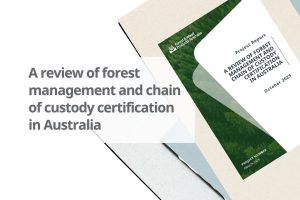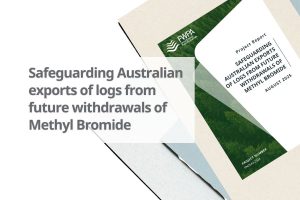New in-field drying models for Australian logs will help equip growers with the tools to balance the costs of drying against the potential financial gains.
The researchers behind the new study have also identified opportunities for growers to tap into an additional income stream, by drying and selling logging residue as biofuel for energy production.
Martin Strandgard, Senior Research Fellow at the University of the Sunshine Coast, who led the research, explained the cost of transporting logs to saw and chip mills can account for up to 50% of the price of timber on delivery. As water tends to make up approximately 50% of non-dried logs and biofuel, eliminating moisture provides clear opportunities for boosted profitability.
“In-field drying of these materials presents the Australian forestry industry with the opportunity to reduce transport and delivery costs. This will enable better cost-competitiveness with alternative building materials and timber imports, while helping to establish a domestic and export forest biofuel industry,” Strandgard said.
Use of forest biomass as sustainable biofuel is widely practised overseas, with Sweden and Finland producing approximately 20% of their energy needs from forest waste. By contrast, Australia is estimated to produce less than 2% of its energy needs from such biofuel.
“Australia therefore has the potential to sell its forest biomass resource, largely considered a waste product at the moment, for energy production, while at the same time helping to reduce greenhouse gas emissions,” Strandgard said.
Potential Australian forest biofuel sources might include logging residue, small diameter or defective trees removed during thinning operations, and timber from plantations that have failed due to drought, pests and diseases.
Strandgard explained that drying forest biofuel is critical not only for reducing transportation costs, but also because its ‘calorific value’ is boosted when dried, therefore increasing the actual value of the material for biofuel users and exporters.
“Of course, in-field drying of logs and biofuel is a trade-off between the potential benefits gained, and the potential losses from impacts such as physical degradation, damage by biological organisms, increased costs of storage time, and processing machinery wear and tear,” Strandgard said.
This research project therefore focused on gathering the background information needed to create models for the effective management of in-field drying under Australian conditions. Field research was conducted across Western Australia, South Australia and Tasmania, involving calculation of the relationships between weather variables (recorded by the nearest meteorological stations) and the rate of drying of various timber materials (by monitoring changes in weight).
“Such models already existed for European climates, but were lacking in Australia,” Strandgard explained.
The research found location and material type both impact on drying rates, but further work is necessary to more precisely define the extent to which the many different variables impact.
Preliminary models created by the researchers are now freely available online, and can be used by growers to help predict the current moisture content of their resource, and put the necessary processes in place to best manage the storage and drying of logs and forest biofuel in-field.
Strandgard stated the logical next step would be to take these preliminary models and use them to create user-friendly tools to aid industry decision-making.
“This might include detailed case studies that examine the supply chain implications and practices required to deliver drier products of acceptable quality and at minimum cost, as well as operational-level supply chain planning tools,” Strandgard explained.
The researchers are recommending conducting further drying trials under a range of different meteorological and storage conditions across Australia, to increase the robustness of the recommended drying models for logs and forest biofuel locally.
In order to truly capitalise on the potential gains associated with infield drying, the researchers also made a number of more general recommendations outlining steps the Australian forestry industry would need to take, including:
· Moving away from traditional payment methods whereby processors pay for logs based on their green weight, towards a system of payment based on volume, thus increasing the incentive for in-field drying
· Increasing the use of high volumetric capacity trucks to enable the transportation of greater volumes of material, particularly for dried and infield chipped forest biofuel.
More information on this study can be found by clicking here.



